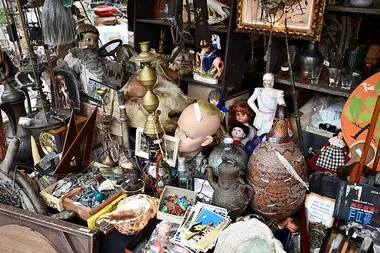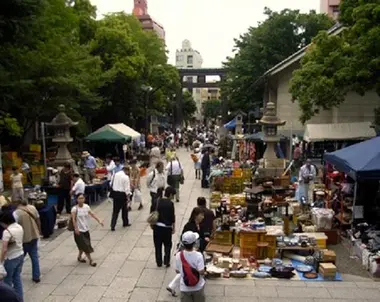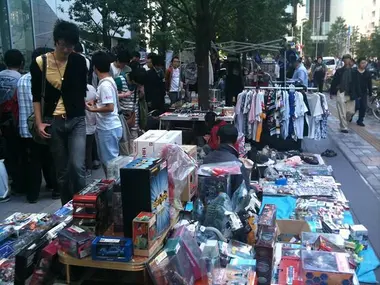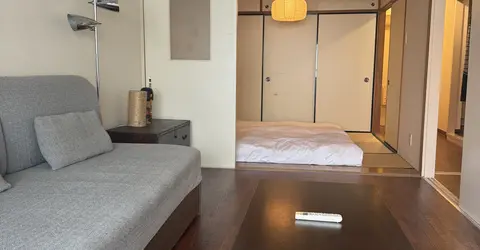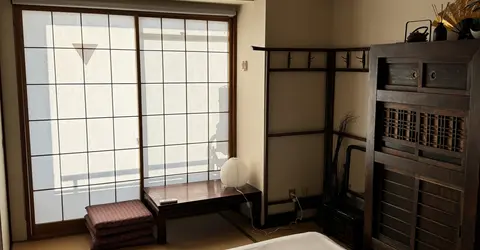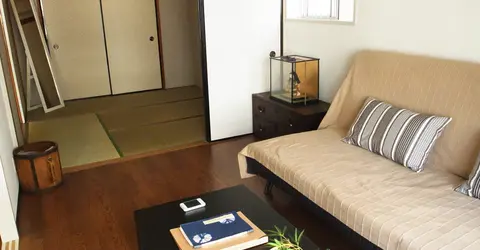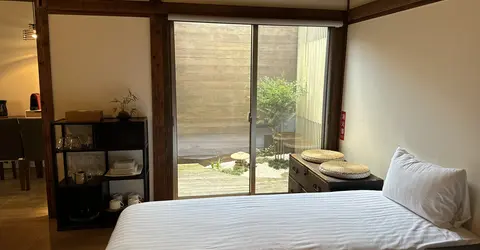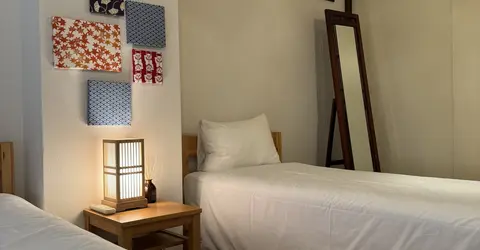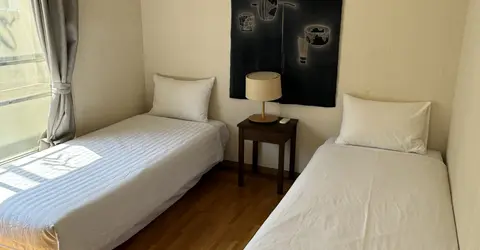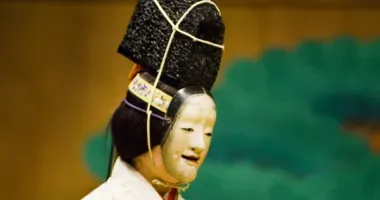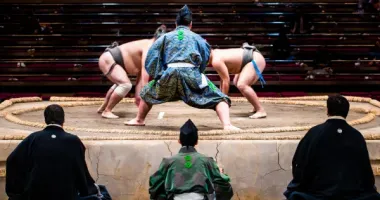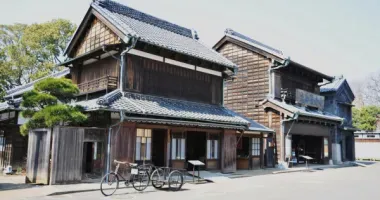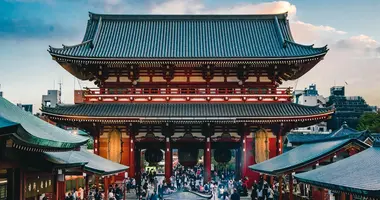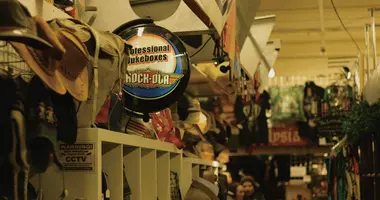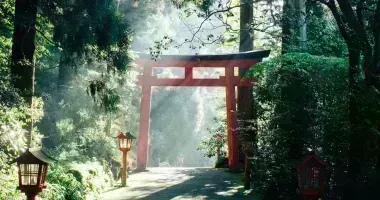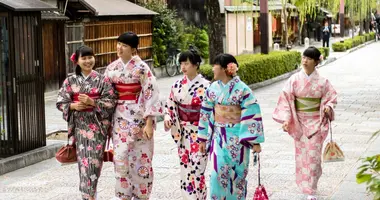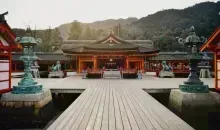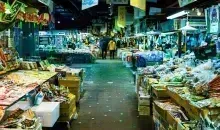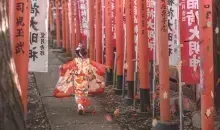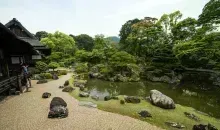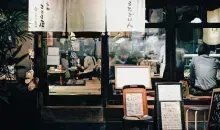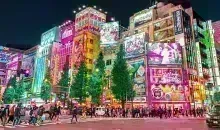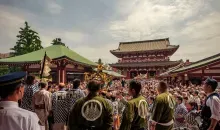The best flea markets in Tokyo
- Published on : 13/08/2019
- by : J.R.
- Youtube
What are the best places to go antiquing in Tokyo?
If Tokyo is the city of fashion, luxury, and shopping, it also has a huge market for vintage goods. Thus, vintage, second-hand shops, especially flea markets are popular and found throughout the capital!
Where to find bargains in Tokyo?
Flea market and vintage enthusiasts do not take days off, even on the road! The Japanese are big fans of the second-hand market, just look at the number of second-hand product shops, like the best known, Book Off. Flea market enthusiasts and the curious wishing to bring back souvenirs at affordable prices will not be disappointed. Open-air markets are therefore very popular for doing good business. There are a large number of them in Tokyo, which are held more or less regularly.
- Read also: Cheap shopping in Tokyo
This is for example the opportunity to buy a kimono at a low price, or even real vintage pieces.
As in the West, it is possible to negotiate over the prices of objects - provided that the seller speaks a little English, or that your Japanese is sufficient! Although markets are often advertised as open until mid-afternoon, it's best to get there before noon. Finally, be aware that if the weather is not good, it is not uncommon for the event to be canceled. Similarly, because of the heat in summer (July and August), flea markets are rarer at this time of year.
Must-see flea markets in Tokyo
Tokyo City Flea Market
Also called " Ohi Racecourse Flea Market ", this large flea market is undoubtedly one of the best known in the capital.
Located south of the Shinagawa district, it brings together several hundred stands offering second-hand products of all kinds: clothing, decoration, tableware, toys and figurines, leather goods, perfumes, books and CDs, electronics... and many more. others. The majority of the stands are installed in a covered lot.
It is also possible to eat on the go thanks to the street food stands scattered on the premises.
Hours: Held most weekends, 9 am to 3 pm
Address : 1-6-26 Katsushima, Shinagawa, Tokyo
Access: Oikebajo or Tachiaigawa station
2. Oedo Antique Market
L'Oedo Antique Market se distingue par son cadre exceptionnel, alternant entre deux lieux emblématiques de Tokyo : l'esplanade près des stades du parc Yoyogi et le Tokyo International Forum.
Oedo Antique Market
The very famous flea market Oedo Antique Market is held alternately in two different places in the capital, either on the esplanade near the stadiums in Yoyogi Park or at the Tokyo International Forum.
This flea market created in 2003 is very famous for its antique pieces, statues, dishes, furniture, etc. 250 exhibitors, often professional antique dealers, take advantage of this flea market atmosphere.
Hours: 1st and 3rd Sunday of the month, 9 am to 4 pm.
Tokyo International Forum - Address: 3-5-1 Marunouchi, Chiyoda-ku, Tokyo - Access: JR Yamanote or Yurakucho line, Yurachuko stop
Yoyogi - Address: Yoyogi Park Keyak i-Namiki Jinnan 2 choume, Shibuya-ku, Tokyo - Access : Harajuku station
3. Mottainai Flea Market
Oedo Antique Market
The very famous flea market Oedo Antique Market is held alternately in two different places in the capital, either on the esplanade near the stadiums in Yoyogi Park or at the Tokyo International Forum.
This flea market created in 2003 is very famous for its antique pieces, statues, dishes, furniture, etc. 250 exhibitors, often professional antique dealers, take advantage of this flea market atmosphere.
Hours: 1st and 3rd Sunday of the month, 9 am to 4 pm.
Tokyo International Forum - Address: 3-5-1 Marunouchi, Chiyoda-ku, Tokyo - Access: JR Yamanote or Yurakucho line, Yurachuko stop
Yoyogi - Address: Yoyogi Park Keyak i-Namiki Jinnan 2 choume, Shibuya-ku, Tokyo - Access : Harajuku station
Spécificités des brocantes tokyoïtes
Les marchés aux puces de Tokyo se distinguent par plusieurs caractéristiques uniques :
- Diversité des lieux : Tokyo organise ses marchés aux puces dans des endroits variés et parfois inattendus. On peut ainsi chiner dans l'enceinte de temples séculaires, sous des voies ferrées, ou même dans des parcs urbains.
- Qualité et authenticité des objets : Les Japonais sont réputés pour leur souci du détail et leur respect des objets. Cela se reflète dans la qualité des articles proposés, même d'occasion. Il n'est pas rare de trouver des pièces en excellent état ou des objets d'artisanat traditionnel authentiques.
- Mélange de moderne et de traditionnel : Dans un même marché, vous pouvez passer d'un stand de kimonos anciens à un étal de gadgets électroniques.
Trésors et trouvailles typiques dans les puces de Tokyo
Les marchés aux puces de Tokyo regorgent de trésors uniques, reflétant la riche culture et l'histoire du Japon. Voici quelques trouvailles typiques que vous pourriez faire :
Akihabara UDX Flea Market
Attention otakus! In the heart of the famous geek district of Akihabara, a small specialized flea market is held once a week, under the tracks of the Yamanote line.
About forty stands offer for sale everything related to the geek universe, manga, and anime: figurines, manga, playing cards, posters, costumes... etc.
Opening hours: every Saturday, Sunday, and public holidays, from 11 am to 6 pm.
Address: 4-14-1, Sotokanda, Chiyoda-ku, Tokyo, 101-0021 - on the first level of the UDX building
Access : Akihabara station
Calendrier des principales brocantes de Tokyo 2025
Si vous prévoyez de visiter Tokyo en 2025, voici quelques dates et lieux incontournables pour chiner :
- Oedo Antique Market (Shinjuku) : Un des marchés aux puces les plus populaires, idéal pour les objets d'antiquité, se tient environ deux fois par mois, de 9h à 16h.
- Togo Shrine Flea Market (Harajuku) : Organisé le premier dimanche du mois, de 8h à 15h.
- Hanazono Shrine Flea Market (Shinjuku) : Se tient généralement le week-end et propose un large éventail d'objets vintage, de 6h à 15h.
- Setagaya Boroichi (Setagaya) : 15-16 janvier et 15-16 décembre. Ce marché vieux de plus de 400 ans est parfait pour les amateurs de brocante traditionnelle.
- Meiji Park Flea Market : Idéal pour ceux qui cherchent des vêtements vintage et des accessoires de mode, se tient le premier dimanche du mois.
Conseils pratiques pour chiner à Tokyo
Pour tirer le meilleur parti de votre expérience dans les marchés aux puces de Tokyo, voici quelques conseils pratiques :
- Arrivez tôt : Les meilleures pièces partent généralement en premier. Pour maximiser vos chances de dénicher des trésors, visez une arrivée dès l'ouverture du marché.
- Préparez de l'argent liquide : La plupart des vendeurs n'acceptent que le paiement en espèces. Assurez-vous d'avoir suffisamment de yens sur vous.
- Apprenez quelques mots de japonais : Même si certains vendeurs parlent un peu anglais, connaître quelques phrases de base en japonais peut grandement faciliter vos négociations.
- N'hésitez pas à négocier : Contrairement à certaines idées reçues, la négociation est tout à fait acceptable dans les marchés aux puces japonais. Restez toutefois respectueux et raisonnable dans vos propositions.
- Vérifiez la météo : Beaucoup de brocantes sont annulés en cas de pluie. Consultez les prévisions avant de vous déplacer.
- Portez des vêtements confortables : Vous passerez probablement plusieurs heures à arpenter les allées. Optez pour des chaussures confortables et des vêtements adaptés à la saison.


